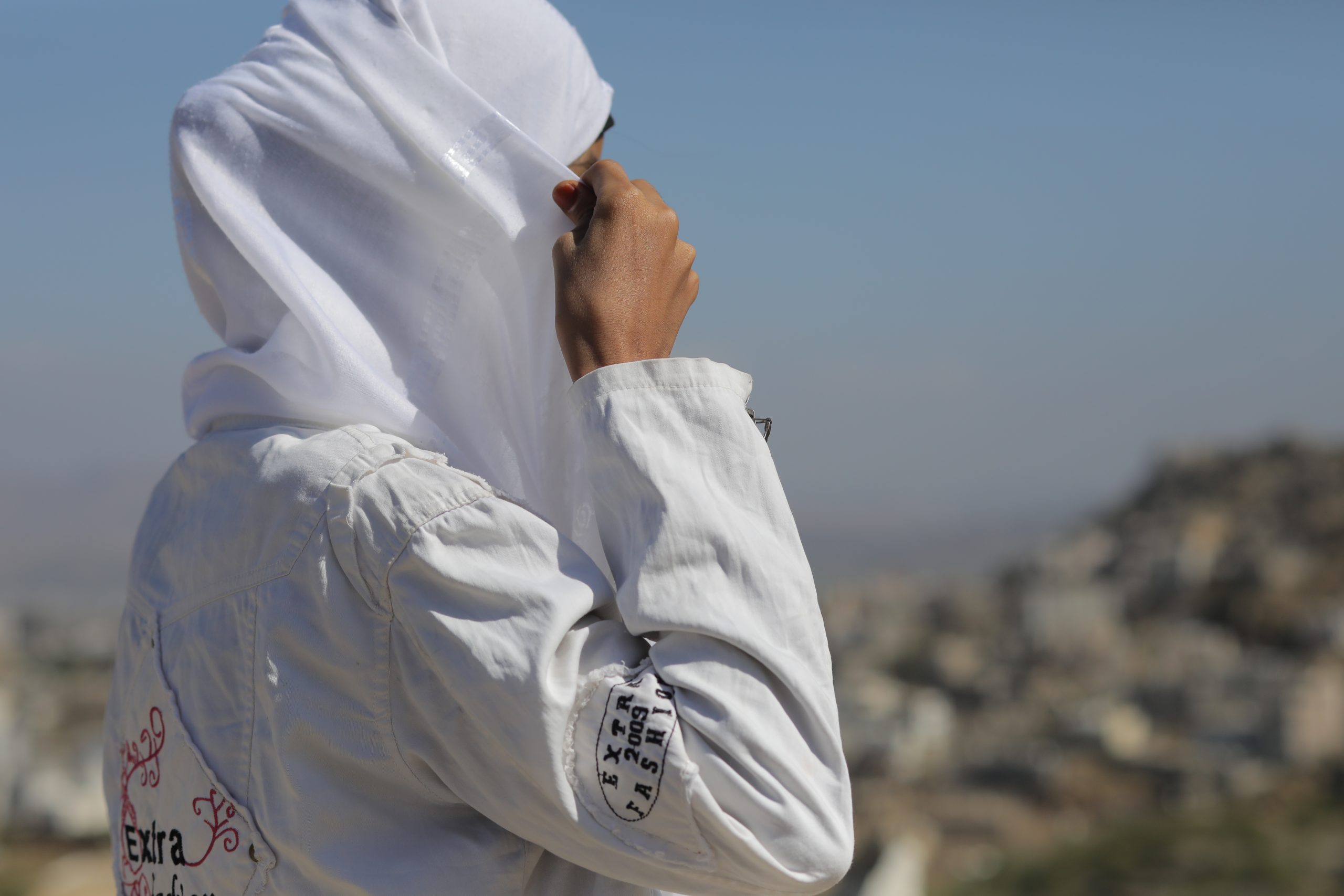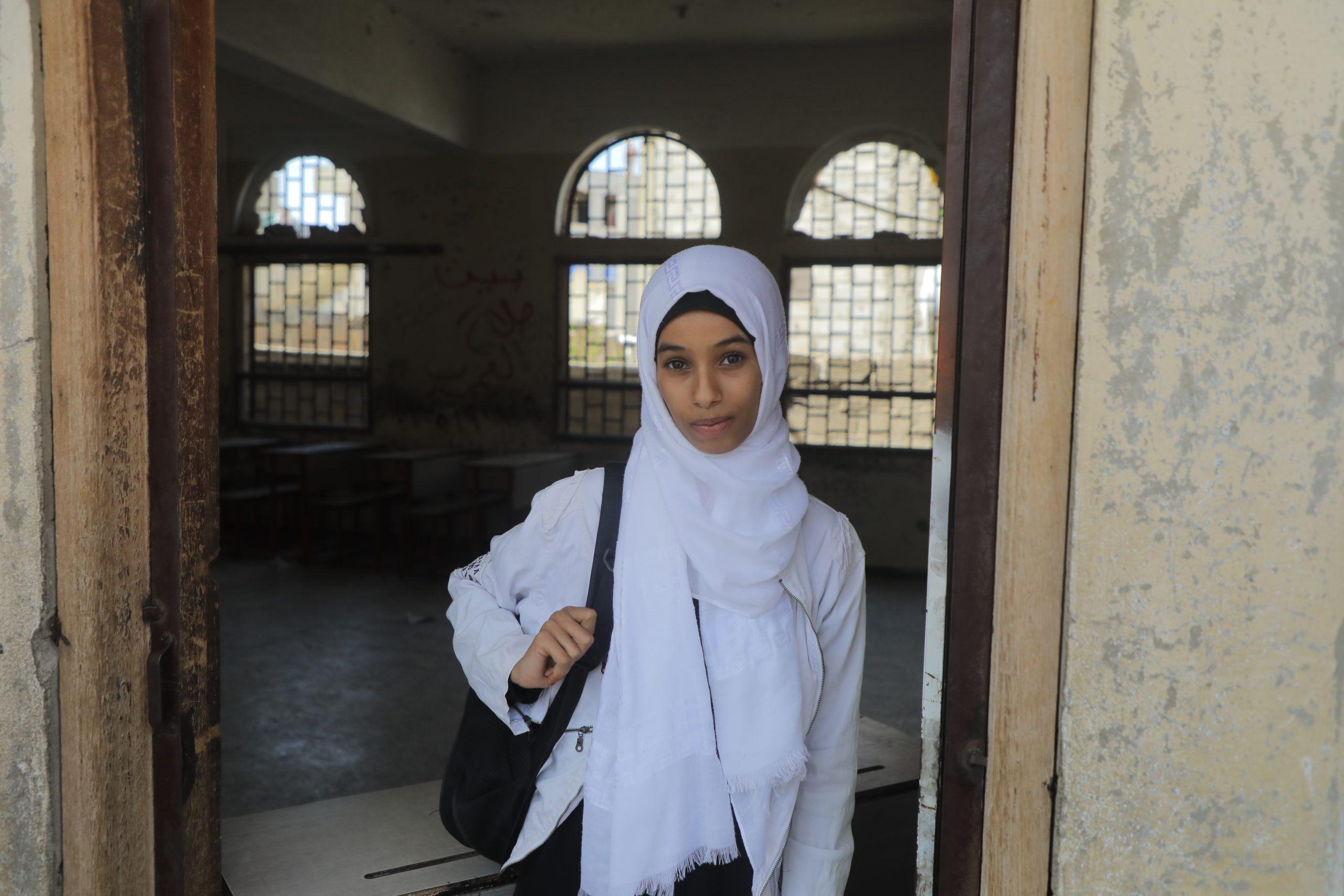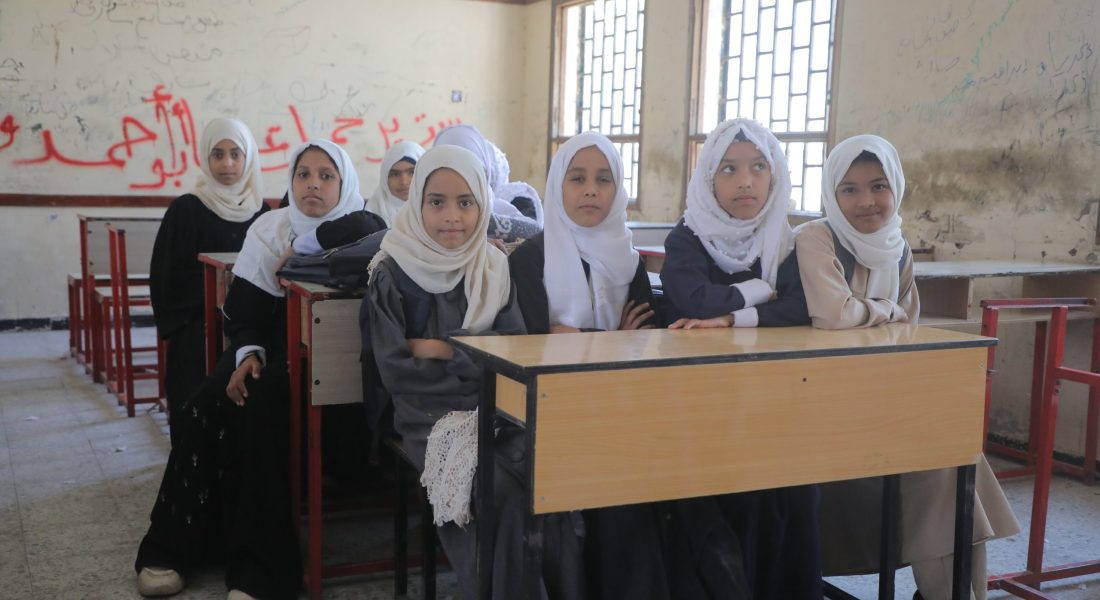On 25 November, the International Day for the Elimination of Violence against Women, Project Masam stands with Yemeni women and girls living under the shadow of explosive violence.
In Yemen’s long conflict, landmines, improvised explosive devices (IEDs) and unexploded ordnance (UXO) scar the soil, and magnify the risks of gender-based violence, cut women off from lifesaving services, and hold entire communities hostage. According to UN data, an estimated 6.2 million women and girls in Yemen are now at risk of gender-based violence (GBV), while roughly 9.6 million people require GBV and sexual/reproductive health services amid a collapsing system.
“In the last eight years, I have seen mothers forced to choose between a mined shortcut or no hospital at all; I have seen daughters who stop going to school because the road is booby-trapped. This is what explosive violence does to women’s lives, when it turns every journey into a risk assessment,” Ousama Algosaibi, Project Masam’s Managing Director, said.
When we meet Yemeni women like Saliha Abdah, the statistics become names. Saliha told Project Masam: “We were displaced when the war started; the Houthis entered our region and planted landmines. I went to the mountain to collect wood. Suddenly, a landmine exploded under me. This incident […] led to the amputation of my leg, under the knee.” She then added: “I used to have my legs, I used to go to work. Now my children and I don’t have anything… because I am disabled and can’t work.” Her husband left after the injury, another evidence of how contamination ripples through family and social fabric in a conservative country like Yemen.
Or consider Amina Ibrahim, who stepped on a mine while herding sheep and collecting firewood; the explosion cost her a leg and with it, her livelihood. Her story reinforces how women’s everyday tasks (collecting fuel or water, and caring for families) can become lethal when the land is booby-trapped.

Mariam Fouad readjusts her hijab as she overlooks the besieged city of Taiz, where she is from, and where she was unable to attend school for two years. Credit: Elsa Buchanan for Project Masam
Because of such stories, we know that while many documented mine/ERW casualties are male, women and girls are disproportionately disadvantaged as survivors: they face disability, social stigma, loss of income, increased caregiving burdens and emotional trauma. The evidence Project Masam has collected shows that women’s roles caring for dependants, fetching water, herding livestock or collecting firewood increase their exposure to explosive hazards.
The travelling women must make, for example to market, clinic, school, or the water point, often becomes a daily gamble when the paths are laced with invisible explosives. The impact of landmine warfare extends its reach into the household, into routines that used to be harmless. When a woman is injured or loses a family member, the consequences resonate in ways that go far beyond the blast: loss of protection, income, household stability, access to services, and schooling for children, who in many cases start work to help out the family. Indeed, the UNFPA found that over 90 per cent of rural areas lack the necessary prevention and response services to support women and girls at risk of, or victims of, gender-based violence.
“Mines blow up roads and blow up everyday routines. When every errand is perilous, it is women running households, caring for children and elders, who carry the heaviest daily burden,”Algosaibi added.
The harm unleashed by explosive devices radiates across communities. When women cannot safely reach clinics, maternal outcomes worsen. Health disasters replace what would once have been treatable complications. In Yemen, displacement, contamination and a failing health system combine to leave pregnant women and new mothers more vulnerable than ever. The United Nations Population Fund (UNFPA) reported that in 2025, nearly 5 million women of childbearing age, including pregnant and breastfeeding women, were “projected to face challenges accessing reproductive health services”.
Maternal health outcomes were better before the war, with maternal mortality rising during the protracted conflict (an average of 213 deaths per 100,000 live births was recorded in 2016). Today, however, the UNFPA found that one woman dies in pregnancy or childbirth every two hours in Yemen. Fewer than half of births are attended by a skilled health worker, and only about 20% of health facilities can provide maternal and neonatal care.

Mariam Fouad poses in the doorway of her classroom in Taiz, a place she was unable to attend for two years due to the violence and landmine warfare. Credit: Elsa Buchanan for Project Masam
For girls, schooling becomes dangerous when the route to school crosses a mined area, or when the school itself is destroyed or impassable because adjacent land was mined. One young student, Mariam Fouad, 13 and a Grade 8 pupil at Ibrahim Aqeel School in Taiz, told Project Masam how she is now behind on her grades because she couldn’t go to school for two whole years due to the war and the presence of landmines inside and around her school.
“My father used to study at this school, and now it has been destroyed. It stopped for two years because of the war and we could not go out to the school to study because they were besieging it from all sides. I didn’t study at home during that time.”
She continued: “My father was upset when the school was destroyed by landmines. And now our hearts fear that there are mines. The awareness campaign [explosive ordnance risk educators] came and said this school is in danger. It means that the schoolyard is surrounded by mines on all sides. It means we cannot go beyond the boundaries. Planting landmines is a great crime against children and those who want to learn. Many students and people used to study there, but they stopped studying and were deprived of studying.” The interruption of education for girls means long-term loss of opportunity, and the likelihood of permanent disengagement from schooling increases.
Economically, when women cannot move freely or safely, when they lose limbs or are unable to reach markets or fields, families lose income, markets shrink and communities regress. One report noted that in the Taiz region between 2017 and early 2023, 220 girls and women were victims of landmines: 17 killed and 203 injured. For the same period, mines claimed 1,222 victims total in that region. Those figures hint at the gender-specific face of explosive violence in Yemen.
The social fabric suffers too: stigma against female survivors can lead to abandonment, divorce, and discrimination. Saliha’s husband leaving the family is one of many such tragedies.
Survivors with disabilities often find themselves isolated, reliant on children or extended family, without income or social inclusion. When entire households collapse, the community pays the price, not just in terms of loss of lives but in shattered livelihoods, increased dependency on the community and, or, aid, and interrupted generational progress.
Having witnessed first-hand the devastation landmines leave behind, Algosaibi explained: “Every blast ripples outward: a clinic closes early, a midwife won’t risk the road, a girl misses exams, or a bustling (and economically needed) market day empties. The cost is paid in women’s opportunities, health, and dignity.”
If we are to make real progress toward eliminating violence against women in Yemen, then we must begin with making the ground itself safe, the managing director highlighted. Women like Amina Ibrahim and Saliha Abdah need more than symbolic attention. They need access: access to de-mined roads, cleared paths to clinics, safe return for displaced families, risk education targeted at women and girls, and the sharing of minefield maps so areas can be released and reconstruction can begin.
Algosaibi insisted the first priority must be an immediate halt to the laying of mines and IEDs by the Houthis and their allies. Then, Yemen needs transparency: maps and coordinates of minefields must be handed over, and contaminated land must be given access, surveyed, and cleared.

Young girls take an Arabic exam on the sun-drenched rooftop of their school, which was destroyed by landmines and IED explosions in Taiz. Credit: Elsa Buchanan for Project Masam
Even when clearance is underway, women must access protection services: local and international funding should go to safe shelters, psychosocial support, and legal aid. Additionally, support must be gender-sensitive (recognising the unique risks women and girls face, the social stigma survivors bear, and the additional burdens they carry in caring for families when contamination remains).
For peace to happen, women must be central to recovery and peacebuilding. They must be voices in planning risk education, justice, and other rebuilding services. Research by the Council on Foreign Relations shows women remain significantly under-represented in formal peace efforts; yet those who clear roads, educate children about explosive risk (such as explosive ordnance risk educators like Sara Abdulwahab Baggash in Taiz), and rebuild communities often are women. Their experience and insight are indispensable.
“If we are serious about ending violence against women, we must start with the ground they walk on,” Algosaibi noted. “Clear it, make the routes safe, return services, and protect those who speak up. Do this, and peace stops being a slogan and becomes a street women can actually use.”
On this day, our commitment is clear: the elimination of violence against women in Yemen must include the elimination of landmines and IEDs, the release of routes to safety, and the rebuilding of education, health and livelihoods with women at the heart. Only then can women, and Yemen more widely, move forward in safety, dignity and possibility.

